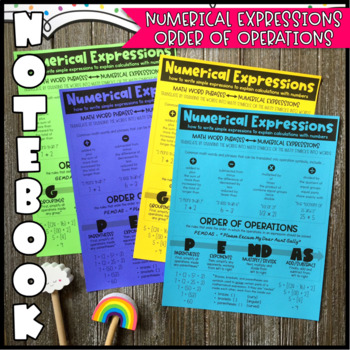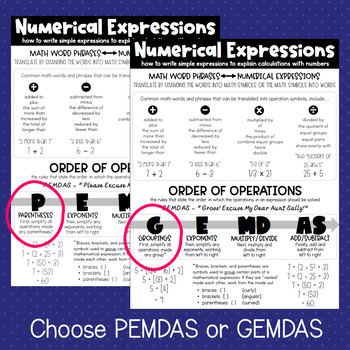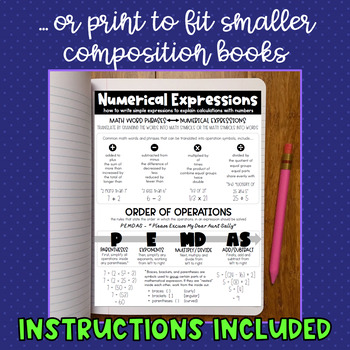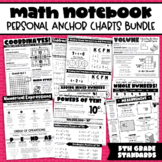Math NB: Numerical Expressions & Order of Operations (Personal Anchor Chart)
- Zip
What educators are saying
Also included in
- This resource includes all of my 5th grade personal anchor charts and more will be added as I create them! These helpful pages will be a welcome addition to fifth grade math notebooks and binders. My students also posted them in their work area at home during remote learning. Parents will appreciatePrice $23.99Original Price $28.00Save $4.01
Description
This personal anchor chart will come in handy as you introduce or review writing simple expressions to explain calculations in numbers. Two notebook pages are included, one which explains the Order of Operations using PEMDAS, and the other using GEMDAS. Both pages also list key math word phrases to translate into operational symbols and numerical expressions.
These anchor charts will be a helpful addition to 4th-6th grade math notebooks and binders. Parents will appreciate having an explanation of the CCSS standard for homework help and remote learning as well.
Both notebook pages fit:
- 8.5 x 11" spiral notebooks and binders
- smaller notebooks and composition books - printing instructions included
- PDF and PPTX files included
STANDARDS:
Write and interpret numerical expressions.
Write and evaluate numerical expressions involving whole-number exponents.
Use parentheses, brackets, or braces in numerical expressions, and evaluate expressions with these symbols.
Write simple expressions that record calculations with numbers, and interpret numerical expressions without evaluating them.
Identify parts of an expression using mathematical terms.






